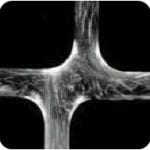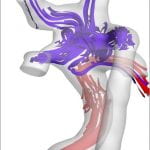Congenital heart defects (CHD) are the most common type of birth defects and as well the leading cause of birth defect-related mortality. CHDs include any defect present in the structure of the heart and great vessels at the time of birth. These defects affect approximately 9 out of every 1,000 births. Surgical interventions are necessary for life-threatening CHDs. Unfortunately, their life expectancy is relatively low: the incidence of residual complications is relatively high, and these children continue to be at increased risk for sudden death later in life. As pediatric cardiovascular engineers, we are using specialized knowledge and cutting-edge engineering techniques to help pediatric cardiologists better identify the cause(s) of pediatric heart problems and improve the treatment. In addition, we are carrying out longitudinal studies and patient registries to precisely define the risk of specific heart defects, appropriately manage surgeries, and meticulously predict potential late postoperative complications. After all, we are targeting to enhance the outcome of the pediatric patients and their life qualities. Furthermore, as a long-term goal, we aim to understand the cause of pediatric heart diseases and ultimately try to prevent the disease.



